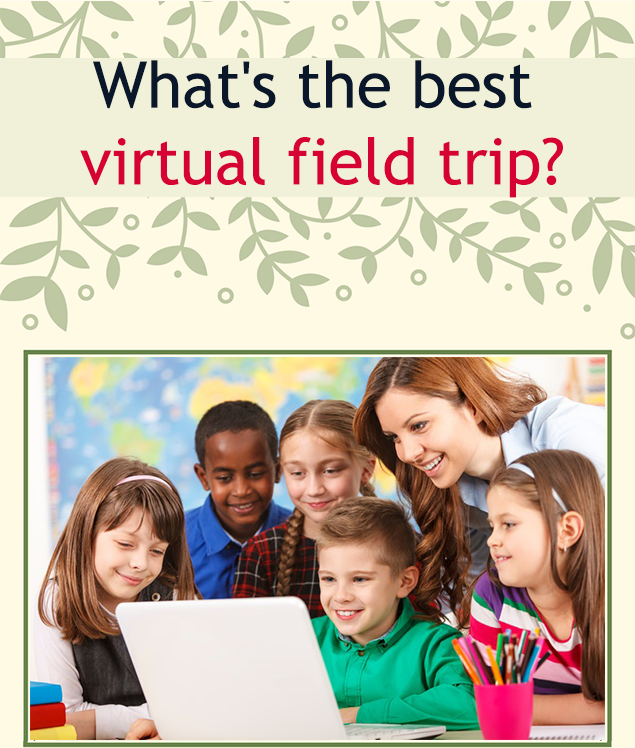One Stop Guide to Planning a Virtual Field Trip
Posted by Network Support · Leave a Comment
Coordinate a guided exploration through the world on the web with these pre-planning tips…
Catching the attention of a diverse group of students, sustaining their interest in a subject, going beyond basic book knowledge, presenting experiences that will be etched in their memory and helping them make real-life connections – these are some of the goals that teachers committed to holistic education strive to achieve. There are often many obstacles to providing this type of experience including increasingly short attention spans, technology-infused living, tight budgets and curriculum demands. In such a context, virtual field trips have become a useful tool that furthers engaging education that students can be excited about.
Using technology, virtual field trips allow teachers to get creative. They grab attention, provide hands-on experiences and move beyond what the book says. Available at the click of a finger, a virtual field trip overcomes many obstacles such as budget constraints and different student-abilities, making it a more inclusive tool.
The success of virtual field trips often depends on how well the trip has been planned. Teachers need to think ahead in order to glean the most out of these hands on learning experiences for everyone. Essentially, the planning process is carried out in these four steps:
Step 1: Conduct Research
Much like a teacher would research the best location before taking their class on an off campus field trip, researching the right virtual field trip to match a lesson plan is the foundational step in making an effective virtual tour. Teachers should look out for creative, accessible and engaging virtual trips to enhance lesson plans.
It is crucial that teachers go on the virtual trip before hand. This will give teachers the opportunity to map out where to take the class and what key points will enhance their learning the most. While screening the trip teachers will also have the opportunity to think of activities that can relate to the trip and further the project.
Step 2: Lesson Plan
Every virtual field trip needs to be relevant to a specific lesson or topic. Teachers need to have clear learning objectives in order to ensure that the virtual field trip aids in reaching those goals.
Teachers should ask themselves these important questions while planning: Does this virtual field trip add to the lesson? Will this virtual field trip spark students’ inquiry behavior? Are there any elements in this virtual field trip that are not aligned with the state curriculum? What is the one big point that the students will gain from this virtual field trip? Is this virtual field trip inclusive for all the students in the class?
Step 3: Design Assessments
Assessments of any learning experiences are essential aspects of teaching as they help gauge how much students have understood and how best to build on that existing understanding. Similarly for virtual field trips, teachers need to design assessment modules to evaluate what their students have learned from the project. There are three basic stages of creating an assessment for virtual field trips: pre-trip, during-the-trip, and post trip.
- Pre-trip: Teachers should introduce the topic that will be covered in the trip and then ask the students to reflect on what they already know about this topic. The teacher then can introduce the virtual field trip that the students will be embarking on and give directions for what the expectations are of their participation during the trip.
- During-the-trip: Teachers can observe students while they are on their virtual field trip. This observation will help teachers assess whether students are following directions and if the virtual field trip had the impact they had envisioned for all the students.
- Post-trip: There are a number of ways that teachers can conduct a post-trip assessment. Teachers can ask students to get into groups and discuss a set of questions, have everyone share their personal experience with the class or give a home assignment to write about the experience. Some of the points that the students will need to talk or write about will be what they expected to learn, the activities they participated in, their perspectives on the trip and what they learned.
Step 4: Secure Permission
Virtual field trips do not require students to leave the school premises, so getting permission from parents or school authorities may not seem necessary. However, it is good for teachers to keep schools and parents in the loop about where the teacher is “taking” the students even within the classroom. Keeping parents informed can also inspire families to take virtual field trips of their own and enhance learning outside of the classroom as well.
Like this article for teachers?
Browse the Professional Learning Board COURSE CATALOG to find related online courses for teachers in your state. Professional Learning Board is a leading provider of online professional development classes that teachers use to renew a teaching license or renew a teaching certificate.





